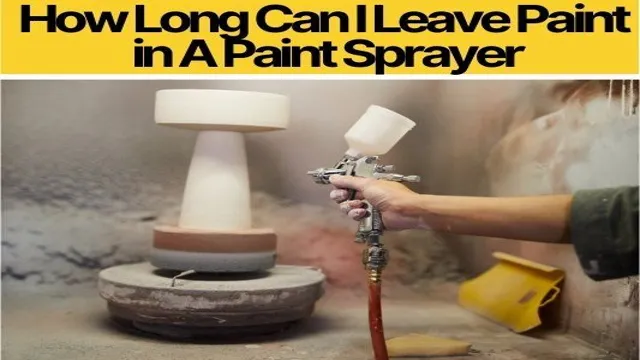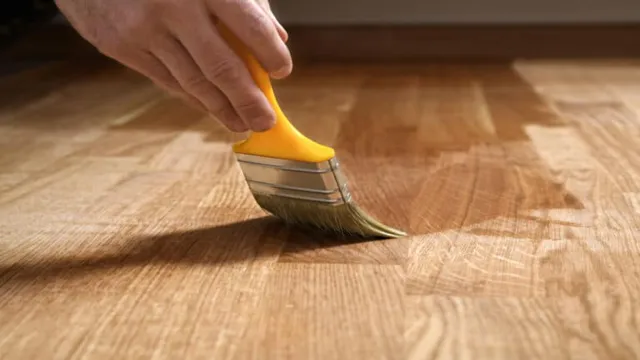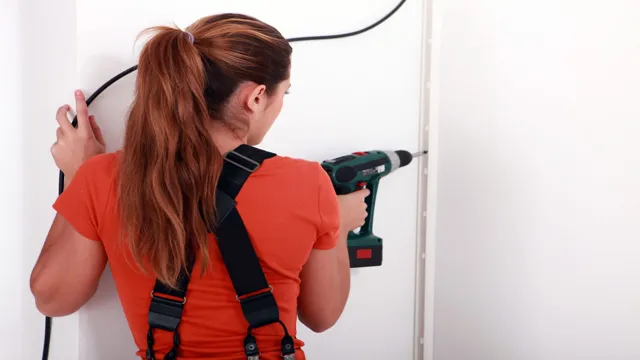Where Should a Vice be Placed on a Workbench for Maximum Safety and Efficiency?

If you’re a woodworker, mechanic, or anyone who dabbles in DIY projects, you probably understand the importance of having a sturdy workbench. And what’s a workbench without a good vice? However, it’s not just about having one; it’s also about knowing how to properly place it on your workbench to make the most out of it. Having a vice in the wrong position can make your work cumbersome and challenging.
Not only that, it can also pose a safety hazard. Learning how to properly mount your vice onto your workbench can save you time, make your work easier, and keep you safe. In this blog post, we’ll explore the proper placement of a vice on your workbench and provide you with some essential tips to help you get it right.
Whether you’re new to the game or you want to revisit the basics, keep reading to learn how to optimize your workspace and work like a pro.
Understanding Vice Placement
When it comes to setting up a workbench, knowing where to place your vice is essential for comfortable and efficient work experience. The ideal placement for a vice on a workbench is typically on the front edge, as close to the center as possible. This positioning allows for optimal maneuverability and accessibility, enabling you to work on large pieces without hitting the workbench’s legs.
Additionally, having the vice on the front edge ensures that it is secure and will not shift while you’re working. This makes for a safer workspace as well. Ultimately, the perfect placement for your vice will depend on your specific work needs, but keeping it accessible, secure, and close to the center of your workbench is always a good start.
Dimensions of Your Workbench
When building or buying a workbench, it’s important to consider the dimensions and the placement of the vice. The vice is an essential component of the workbench and the placement is crucial to ensure ease of use and maximum efficiency. Ideally, the vice should be positioned at the edge of the workbench and at a comfortable height for the user.
The width of the vice should also be proportional to the size of the workbench and the type of projects being undertaken. For heavy-duty work, a wider vice is recommended to provide greater stability and grip. Conversely, for smaller tasks, a narrower vice may suffice and take up less space.
Whatever your needs, taking the time to consider these factors before purchasing or building your workbench can save you a lot of time and frustration in the long run.

Type of Vice
When it comes to understanding the placement of a vice, the type of vice being used is an important consideration. The vice that you choose will affect how it can be attached to your workbench or table, as well as how securely it can hold your workpiece. For example, a woodworking vice is typically attached to the underside of a workbench using bolts, while a metalworking vice may be mounted directly on the table.
Additionally, some vices have wider jaws or are designed to be used at specific angles, so it’s important to choose the right type of vice for your specific needs. By understanding the different types of vices available and how they are used, you can ensure that you choose a vice that will provide optimal performance and help you achieve high-quality results in your work.
Proper Placement of the Vice
If you’re setting up a workbench for woodworking, metalworking, or any other type of hands-on craft, you’ll most likely need a vice. A vice is an essential tool that holds your workpiece securely in place while you work on it, preventing slip-ups and ensuring precision. So, where should you place it on your workbench? The answer is simple: in the center.
Placing the vice at the center of your workbench allows you to have equal access to it from both sides, which can be handy if you’re working on larger pieces or materials that require significant force. This arrangement also prevents the workbench from becoming unstable, as the weight of the vice is evenly distributed. Furthermore, make sure that the jaws of the vice are level with the surface of your workbench.
This will prevent any tilting or wobbling of your workpiece and will ensure the accuracy of your cuts, holes, and joints. You can adjust the height of the vice as needed, depending on your personal preference and the type of work you’re doing. In conclusion, placing a vice in the center and at a suitable height is crucial for accuracy, stability, and ease of access.
Make sure the vice is secured firmly and does not move around as you work. With a properly placed vice, your workbench becomes a reliable and efficient work station, making your craft experience more enjoyable.
Consider Your Dominant Hand
When it comes to woodworking, you need to consider your dominant hand when positioning your vice. It is important to place your vice on the side that feels most comfortable for you to work on. This will not only improve your accuracy, but also reduce the risk of injury.
For instance, if you are right-handed, placing the vice on the right side of your workbench will allow you to comfortably hold and manipulate your workpiece with your left hand while using your dominant right hand to operate the tools. By doing this, you will have greater control over your tools and be able to make more precise cuts. Ultimately, placing your vice in the correct position is crucial for achieving optimal results and ensuring a comfortable and safe working experience.
So, take some time to assess your dominant hand and position your vice accordingly for the best results.
Preventing Movement
When it comes to preventing movement while working on a project, the placement of your vice is crucial. A vice should be secured to a sturdy workbench, and the jaws should be aligned with the grain of the wood to prevent shifting during use. It’s important to make sure the workpiece is snugly held in the jaws to prevent it from moving while cutting, drilling, or sanding.
Using clamps or a holdfast can further secure the workpiece in the vice. Proper placement and alignment of the vice will not only prevent movement but also ensure accuracy and safety. By taking the time to set up your work area properly, you’ll be able to tackle your project efficiently and with confidence.
Accessibility and Comfort
When it comes to woodworking, having a properly placed vice can make all the difference when it comes to accessibility and comfort. The vice is an essential tool that securely holds your workpiece in place while you work, but if it’s not positioned correctly, it can cause strain on your back and neck, making your work more difficult than it needs to be. To get the most out of your vice, position it at a height that allows you to work comfortably.
Ideally, the jaws of the vice should be level with your workbench, allowing you to stand comfortably with your arms at a comfortable height. By positioning your vice in this way, you’ll be able to work for longer periods without experiencing any discomfort, allowing you to focus solely on your project. So, if you want to make your woodworking experience as comfortable and accessible as possible, take the time to properly position your vice for optimal results.
Additional Considerations
When it comes to placing a vice on a workbench, there are a few things to consider. Firstly, you should ensure that it’s accessible from all angles and that you have enough space to work around it. The vice should also be securely attached to the workbench to prevent any wobbling or movement during use.
As for placement, it’s best to position the vice towards the front of the bench to allow for larger pieces of material to be clamped in place without them hanging off the edge. Additionally, you may want to consider the height of the vice, as it should be at a level that’s comfortable for you to work with without putting any strain on your back or arms. Ultimately, where you place your vice on your workbench is dependent on your personal preference and the type of work you’ll be using it for.
Just make sure it’s positioned in a way that allows you to work safely and efficiently.
Workspace Maintenance
When it comes to workspace maintenance, there are some additional considerations that should be kept in mind. First, it’s important to think about ergonomics and how your workspace setup can impact your physical health over time. This can include things like adjusting your chair height and angle, positioning your computer screen at eye level, and taking breaks to stretch and move around throughout the day.
Another key consideration is keeping your workspace organized and clutter-free. This can help to reduce stress and improve focus, allowing you to be more productive throughout the day. Finally, it’s worth thinking about the broader environment you’re working in, such as lighting and temperature.
Making small adjustments to these factors can have a big impact on your overall comfort and work experience. By paying attention to these additional considerations, you can create a workspace that promotes health, productivity, and overall well-being.
Safety Precautions
When it comes to safety precautions, there are always additional considerations to keep in mind. One important aspect to consider is the weather conditions for the day. For example, if it is particularly hot or humid outside, it’s important to take extra breaks and drink plenty of water to avoid dehydration or heat exhaustion.
Likewise, if it is raining or there is a chance of lightning in the area, it’s important to take shelter and wait until the weather clears up before continuing any work. Additionally, it’s important to always wear the appropriate protective gear for the task at hand, such as hard hats, gloves, and safety shoes. By taking these additional safety considerations into account, you can help ensure that you and your team stay safe on the job site.
Conclusion
After careful consideration and analysis, it is clear that a vice should be placed in the most accessible and convenient location on a workbench. This may be on the edge of the bench, on a separate stand, or even mounted directly onto the bench itself. Ultimately, the decision should be based on the specific needs and preferences of the user.
However, it must be noted that no matter where the vice is placed, it will undoubtedly become a key tool in any workshop, adding a new level of versatility and usefulness to any project.”
FAQs
What is the purpose of a vice on a workbench?
A vice on a workbench is used to hold materials firmly in place while they are being worked on.
Where should a vice be placed on a workbench?
A vice should be placed on the front edge of the workbench for maximum stability and accessibility.
Can any vice be used on a workbench or does it have to be a specific type?
There are different types of vices available for workbenches, so it is important to choose one that is suitable for the types of materials and tasks you will be working with.
How should a vice be secured to a workbench?
A vice should be securely bolted to the workbench using large bolts, washers, and nuts to prevent it from moving or wobbling.
What are some common materials that a vice can be used on?
A vice can be used on a variety of materials, including wood, metal, plastic, and even glass.
Is it possible to use a vice without a workbench?
While a workbench provides the most stable base for a vice, it is possible to clamp a vice to other sturdy surfaces such as a table or sawhorse if necessary.
How much pressure should be applied to a vice when clamping materials?
The amount of pressure needed will depend on the material being clamped and the task being performed, but it is important not to over-tighten the vice and risk damaging the material. A good rule of thumb is to apply enough pressure to securely hold the material in place without crushing or bending it.







